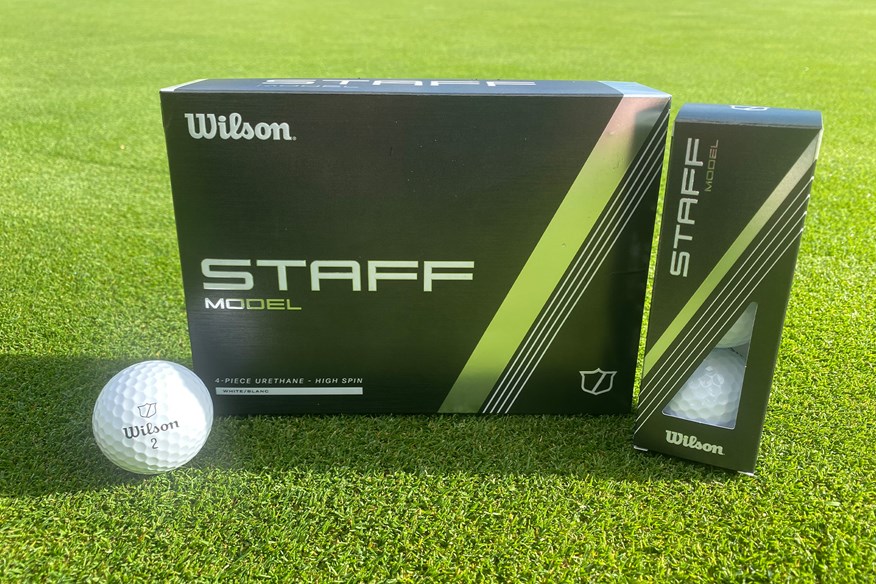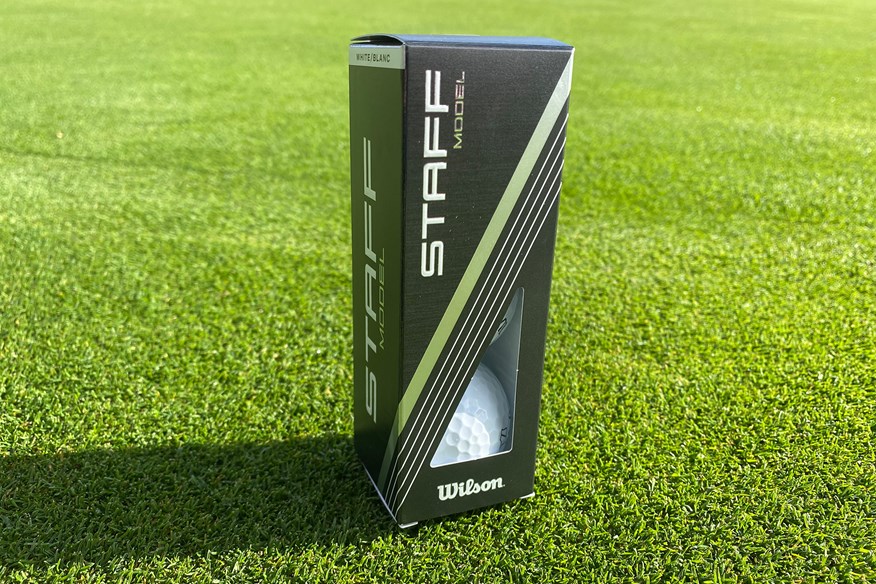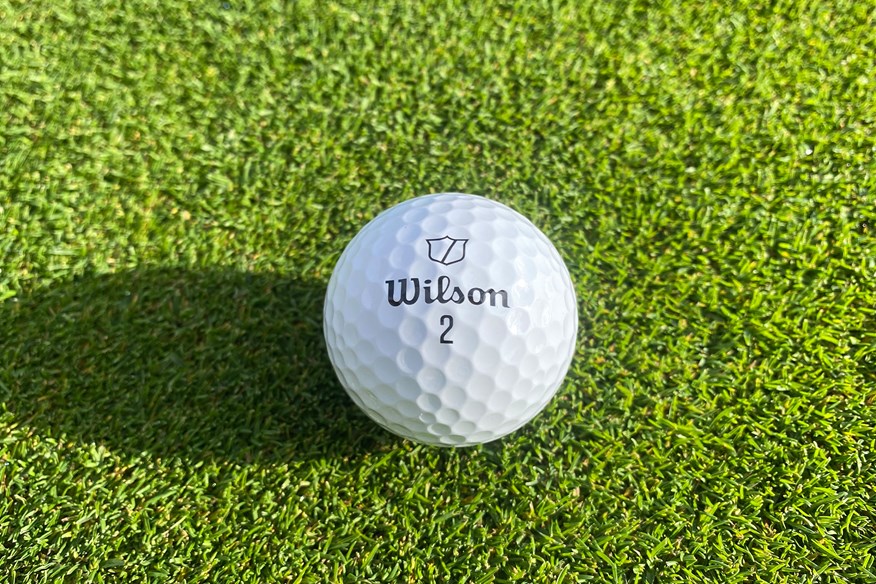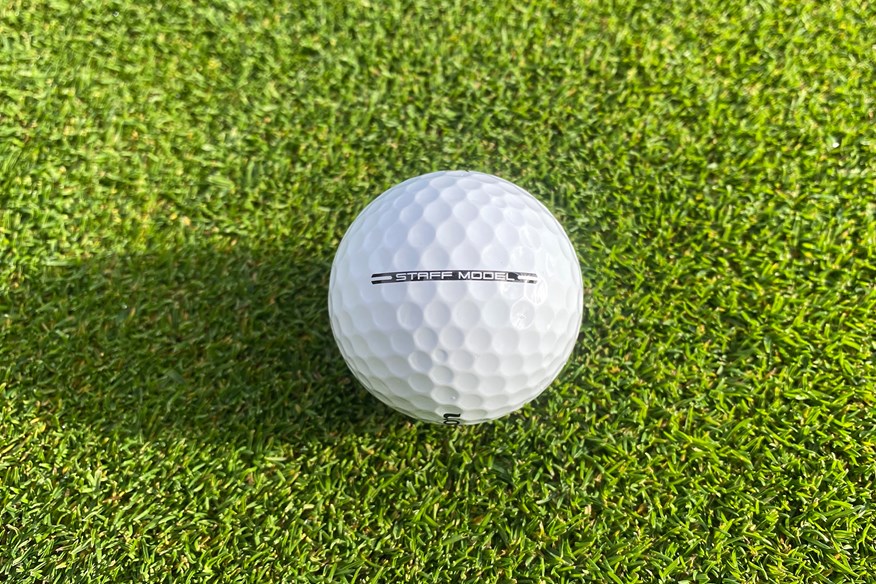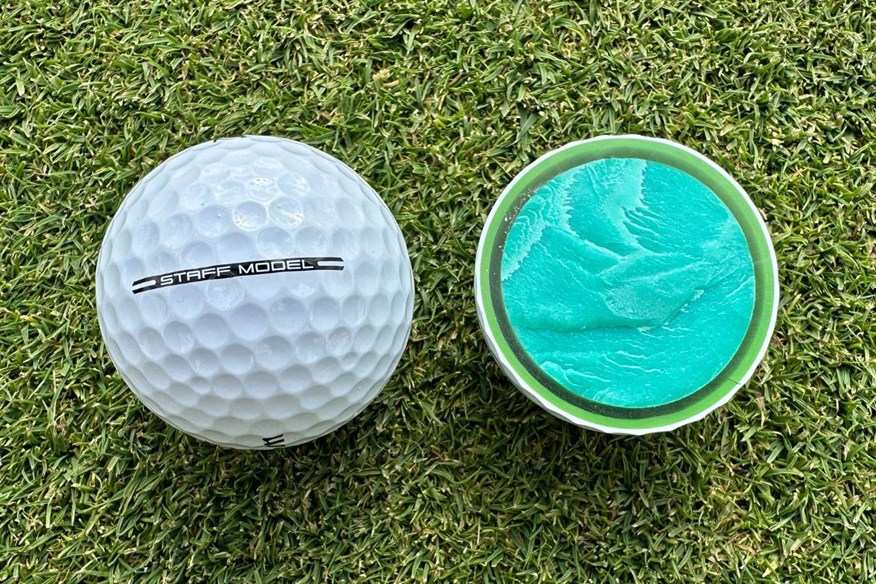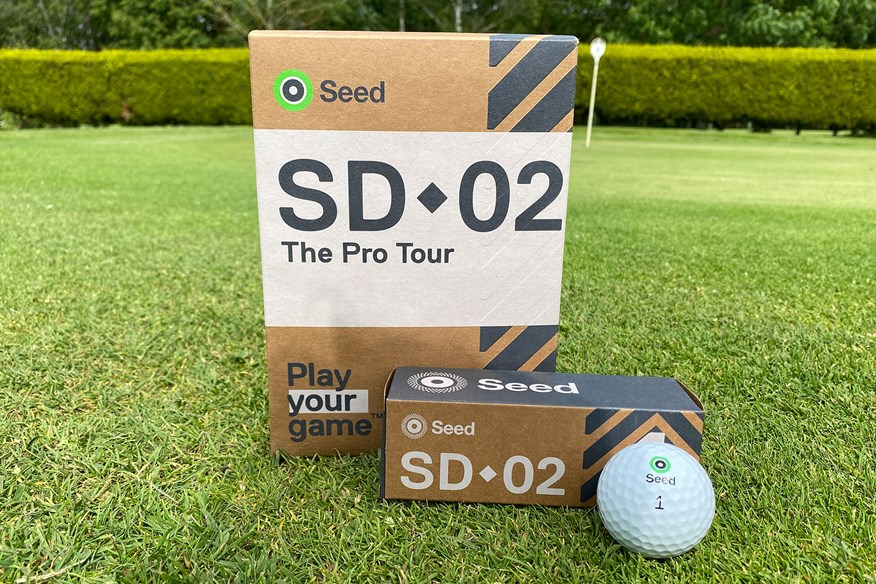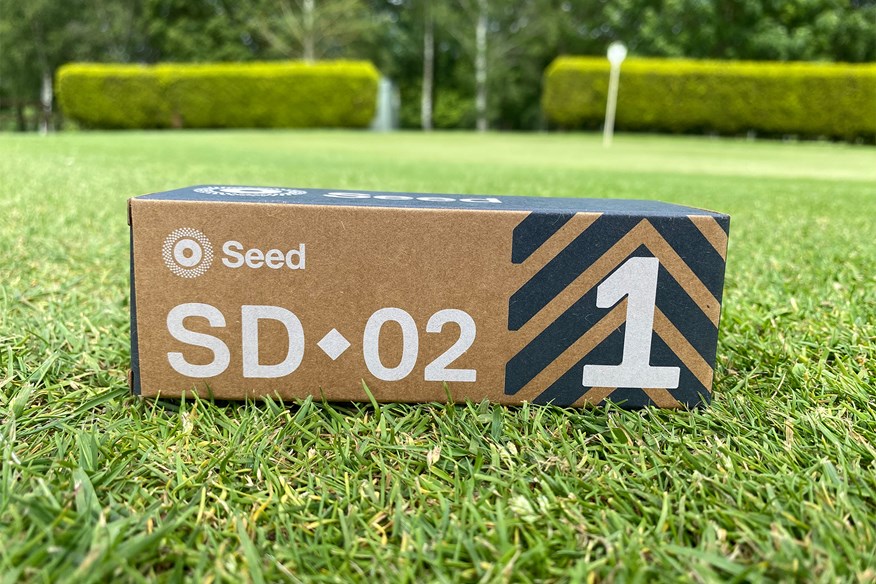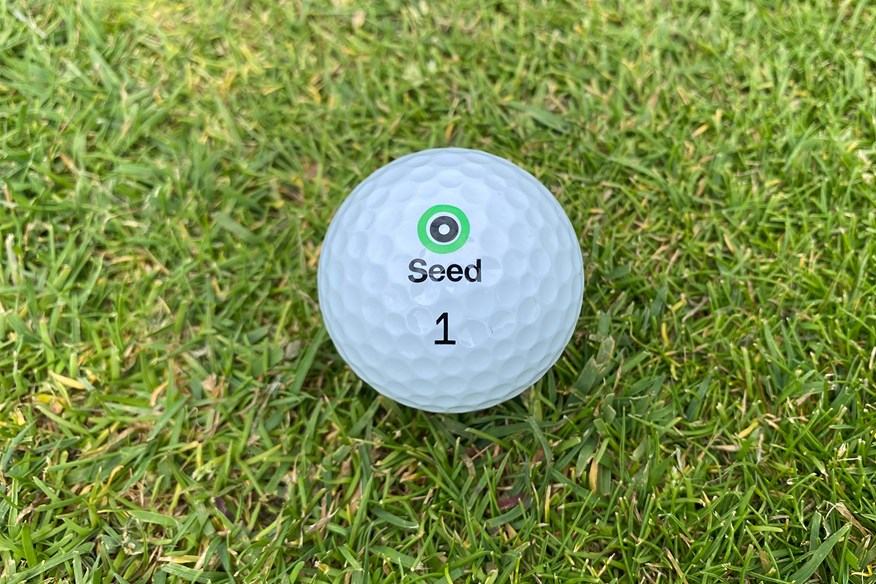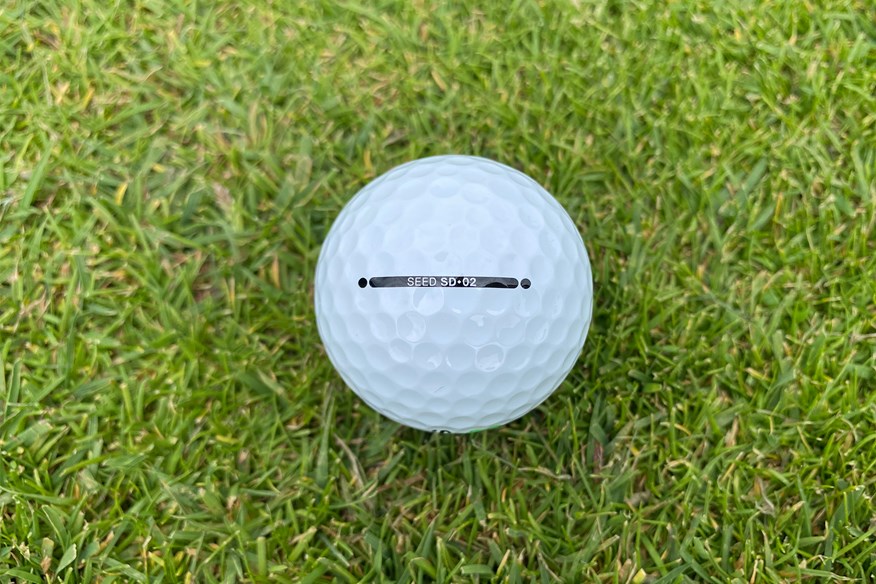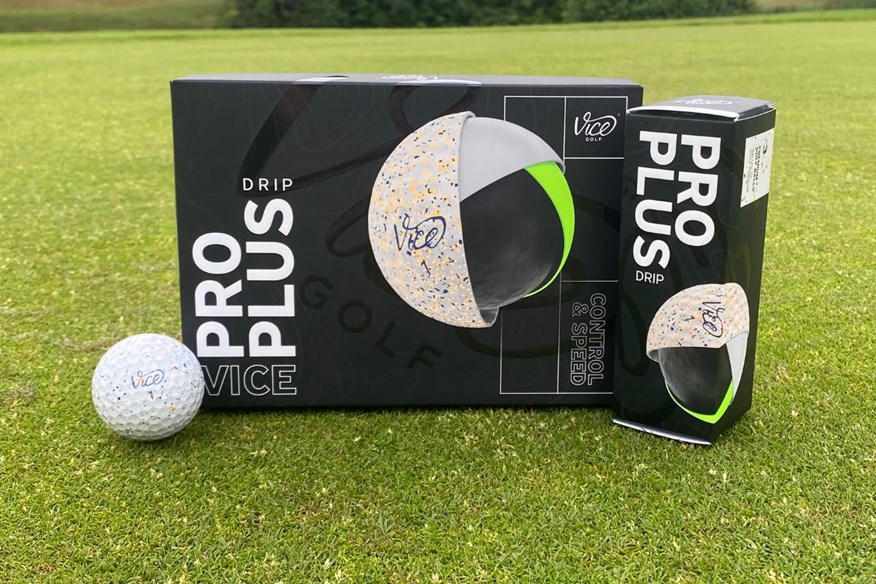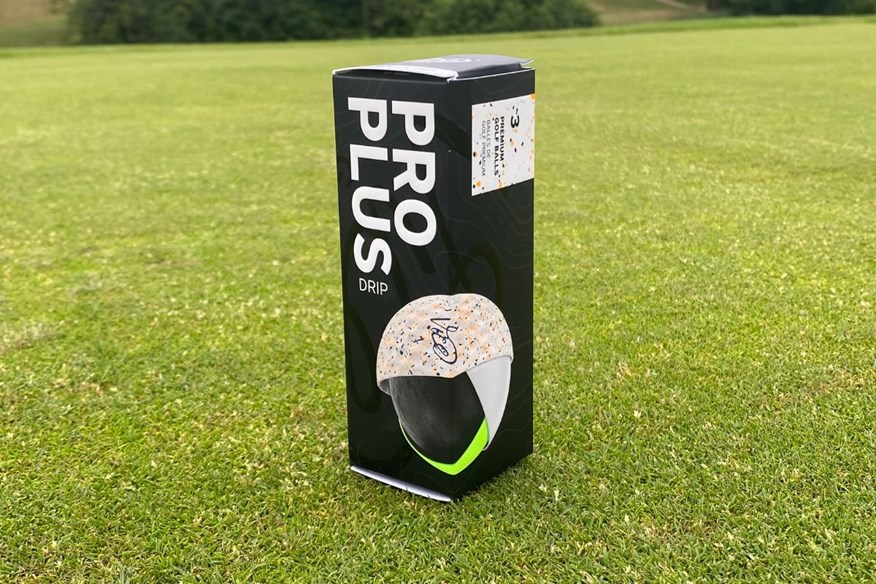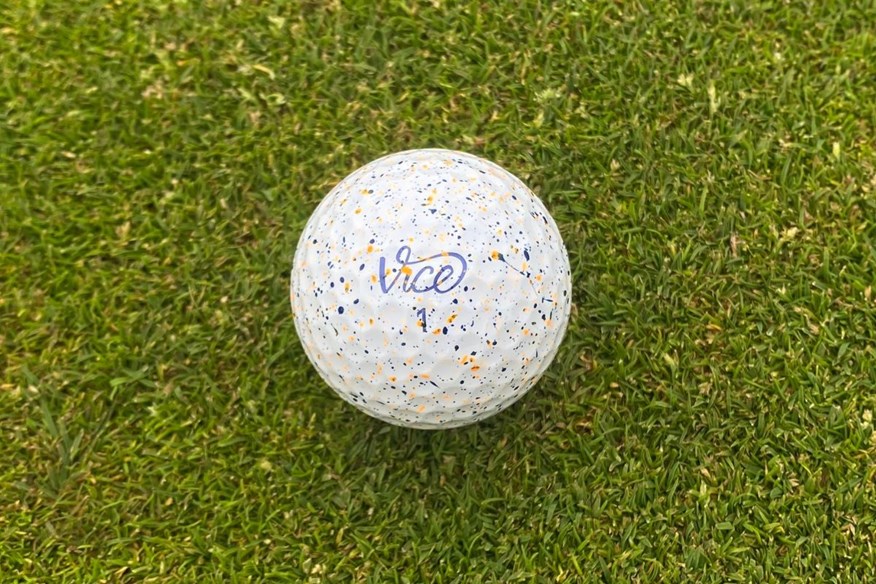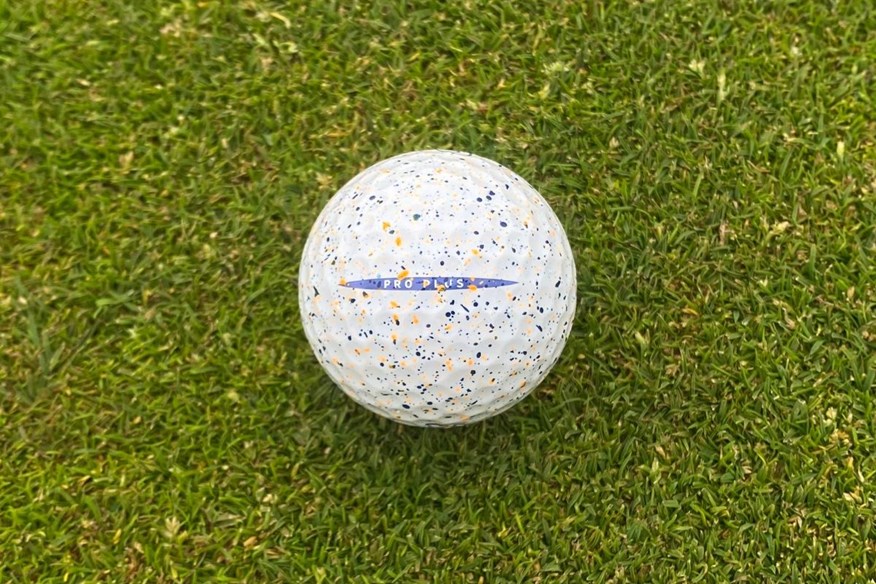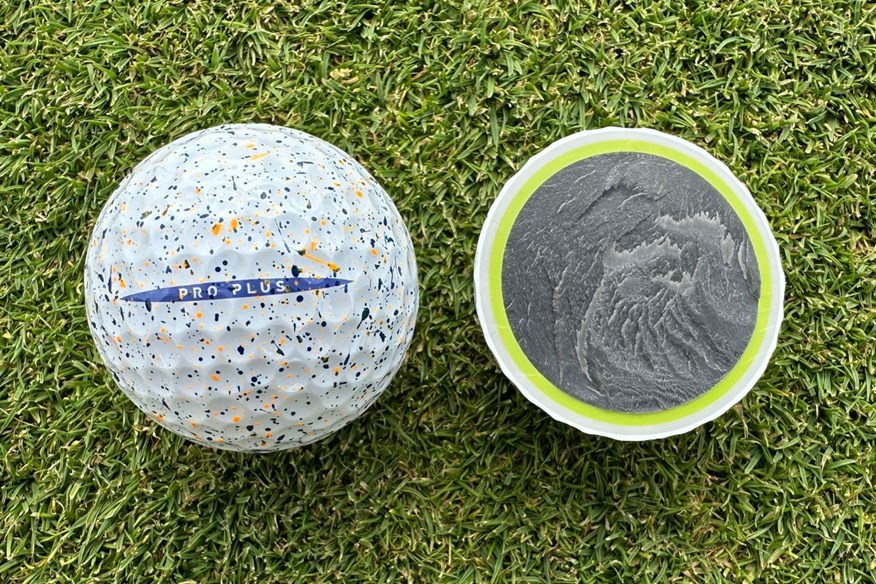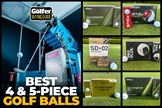Best 4 and 5-piece golf balls 2025: 12 models tested on an R&D robot and on the golf course
Published:

Click here to find out how we conducted our 2025 golf balls test
We’ve tested the most popular and most-played 4-piece and 5-piece golf balls on an R&D robot and on-course to help you determine which is the best golf ball for your game
Jump to:
The majority of the game’s best golf balls are four-piece and five-piece models because they’re packed with technology to help them perform better than any other construction. Golf balls with four or five layers make up a large chunk of the best premium golf balls, not only due to their price, but also the fact they are incredibly popular across all professional Tours.
Of the 62 golf balls we tested in our mammoth robot test, 12 of them were four-piece and five-piece golf balls from seven brands. We’ve also tested every golf ball, from the best Direct-to-Consumer (DTC) models to some of the most popular models on Tour, on-course, and on a robot, to provide you with accurate and extensive robot data, as well as an expert personal verdict. Click the links below to see how we completed this year’s robot test and to find out exactly how we test golf equipment.
- 2025 golf ball robot test: 62 golf balls, 2,232 shots, 50,000 data points… find out what’s No.1 for you
- How we test golf equipment at Today’s Golfer
Four-piece and five-piece golf balls are arguably the best golf balls for every golfer because they offer more tee-to-green performance than any other construction. With the additional layers, manufacturers can refine and engineer all areas of the golf ball to produce optimal performance in every area of the golf course.
Best four-piece and five-piece golf balls: At a glance
While the best three-piece Tour-level golf balls can still compete with four-piece and five-piece golf balls, the additional internal layer allows brands to unlock an extra element, fine-tuning a golf ball to perform perfectly off the tee and around the green.
Obviously, some three-piece and even the best two-piece golf balls can outperform four-piece and five-piece golf balls, but it’s seldom the case. These golf balls do come at a cost, but the benefits are high. You won’t find a golf ball sporting four or five layers among the best cheap golf balls, but given how well they perform, one can easily mix with the best value golf balls.
I would recommend a four-piece or five-piece golf ball to all golfers, unless you struggle with generating too much spin. Most of the best golf balls in this category are among the best high-spin golf balls, and if you’re in search of the best low-spin golf balls, you want to be looking for a golf ball with a different construction.
Although the best four-piece and five-piece golf balls do tend to be among the most expensive on the market, they’re still cheaper than a new driver! If you feel as though your game isn’t quite at the heights you think it should be, changing balls could make a world of difference, and it’s the quickest, easiest, and often cheapest piece of equipment to change.
Best four-piece and five-piece golf balls 2025
The most dominant Tour-level golf ball
Best overall golf ball
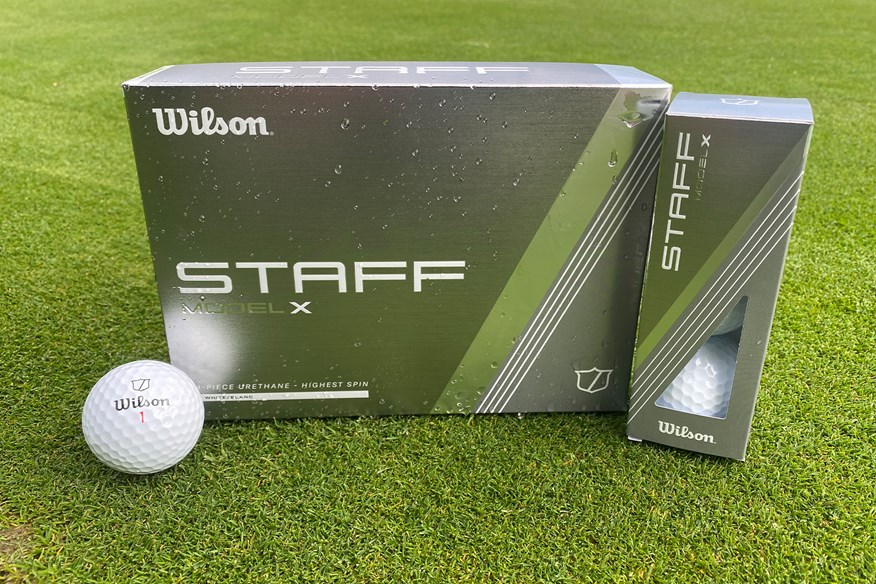

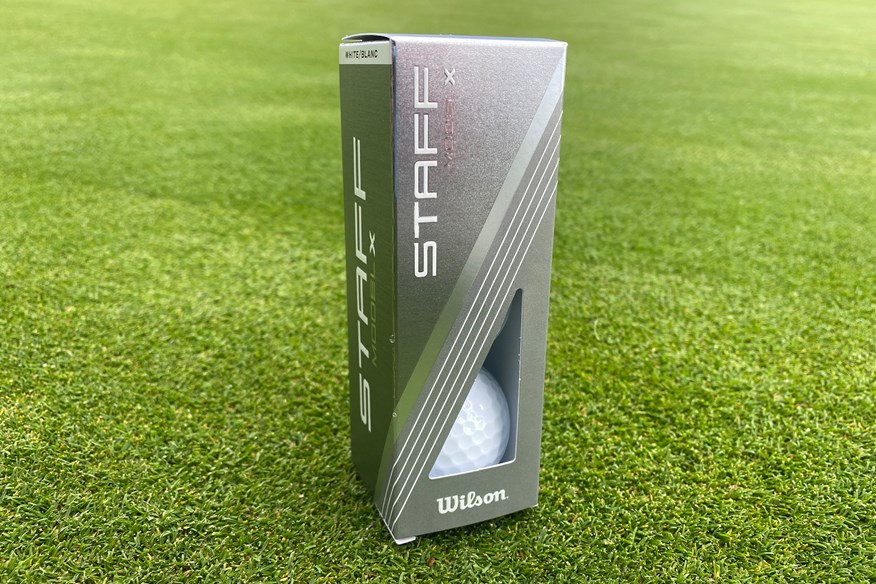
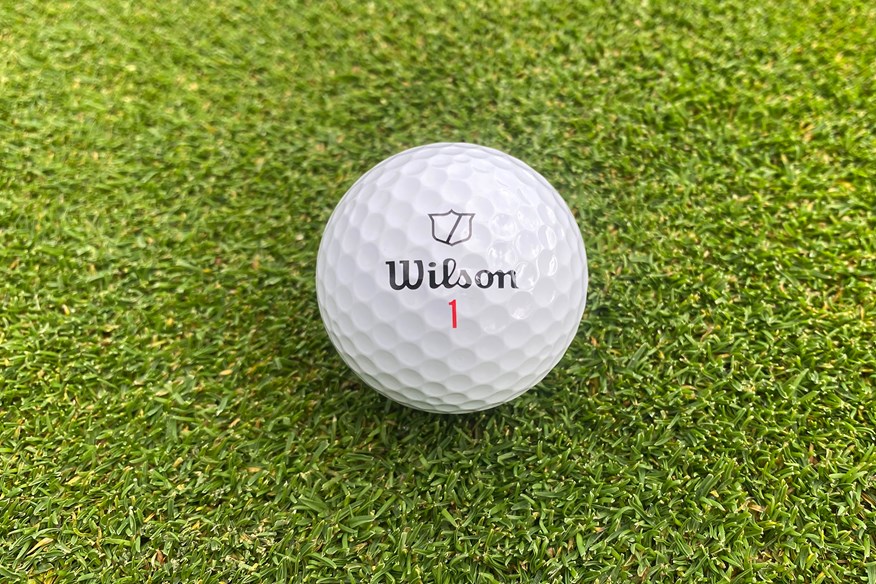
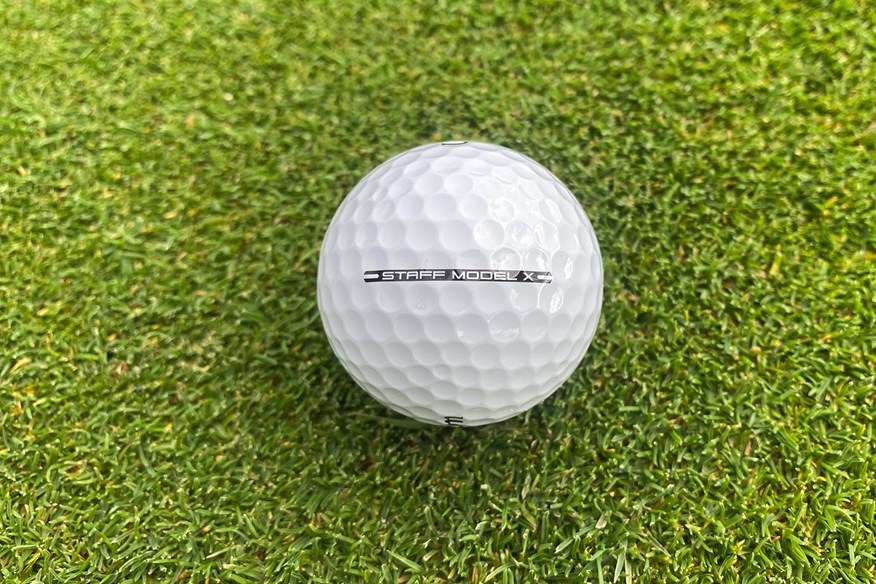

This is arguably the best golf ball in the game. The Wilson Staff Model X is the golf medal winner for tee to green performance at 93mph and 78mph, silver medal winner for tee to green performance at 114mph, silver medal winner for off-the-tee performance, and bronze medal winner for approach play and short game spin.
No other golf ball in our test has received as many awards as the Staff Model X. It's the only golf ball to have received an award in every category.
Staff Model X isn't the longest or fastest golf ball at any of the three driver swing speeds we tested, but it's consistently towards the top of the rankings. It's a higher-spinning golf ball compared to the Staff Model, and that is highlighted with its approach play and short game performance.
This golf ball lands with the steepest descent angle of all 62 tested (45.4°), which helps it easily hit and hold greens. Pair that with the fourth-highest backspin (4,782rpm) and you have a recipe for success.
With the 40-yard pitch shot, Staff Model X generated the third-highest spin (6,091) and again, a steep descent angle (35.5°), meaning this golf ball will stop very quickly when playing around the greens.
On-course verdict
Since being released at the start of 2024, the Staff Model X has been one of my favourite golf balls to play with over the past couple of years. I have a ton of confidence in this model whenever I put it in play. It has become a go-to golf ball for me when I'm not playing my best golf because I know I can trust it to perform well and true.
With its firm feel, it may not appeal to every golfer, but this makes the ball extremely responsive, providing brilliant feedback on all shots. The firm feel is noticeable, compared to softer golf balls, but after a couple of rounds, you practically forget it's a firm golf ball.
Off the tee, the Staff Model X offers slightly more spin than the Staff Model, but that doesn't hinder its overall carry distance. The higher-spinning nature of this model means greenside spin and control is very strong.
The Wilson Staff Model X is the full package. If you're shopping for a premium Tour-level golf ball, this is the No.1 option for golfers of all abilities to consider.
Read our full Wilson Staff Model X golf ball review.
Pros
- Extremely responsive thanks to the firm-feeling
- Performs highly for golfers of all abilities
- Amazing short-game spin and control
Cons
- Higher-spinning than the Staff Model off the tee
| Carry distance (yds) | Driver 114mph - 273.7 | Driver 93mph - 209.8 | Driver 78mph - 162.2 | 7-iron - 156.1 |
| Ball speed (mph) | Driver 114mph - 164.3 | Driver 93mph - 134.6 | Driver 78mph - 113.4 | 7-iron - 109.3 |
| Backspin (rpm) | Driver 114mph - 2,797 | Driver 93mph - 2,792 | Driver 78mph - 2,623 | 7-iron - 4,782 | Pitch - 6,091 |
| Launch angle (°) | Driver 114mph - 11.2 | Driver 93mph - 12.5 | Driver 78mph - 13.8 | 7-iron - 21 | Pitch - 30.4 |
| Descent angle (°) | Driver 114mph - 38.4 | Driver 93mph - 32.6 | Driver 78mph - 28.1 | 7-iron - 45.4 | Pitch - 35.5 |
| Peak height (yds) | Driver 114mph - 33.7 | Driver 93mph - 22.6 | Driver 78mph - 15.9 | 7-iron - 30 | Pitch - 6.7 |
| Compression (psi) | 114 |
- V-Cor advanced performance
- Firm compression core with velocity-boosting additive
- 3SIX2 seamless urethane cover
- 362 dimples
- 4-Piece construction
- Available in white and yellow
Gold medal for tee to green performance at 114mph
The Wilson Staff Model is a very impressive golf ball that unfortunately sits in the shadow of the Staff Model X. That might sound harsh, considering this is the best golf ball for tee to green performance at 114mph in this category.
At the 114mph driver swing speed, this is the third-longest golf ball, and one of only three to exceed 274 yards in the entire test. At a moderate and slower swing speed, the Staff Model is a solid performer, but not as strong as the Staff Model X - third at 93mph and second at 78mph.
There is one area where the Staff Model outshines the Staff Model X, and that's with approach play. Staff Model scooped up the silver medal for approach play with the Staff Model X, one place behind in the bronze medal position.
Approaching and playing around the greens, the Staff Model doesn't generate as much spin as the Staff Model X, but its distance is more consistent. Despite being a lower-spinning golf ball, you might be able to trust the Staff Model more to carry a repeatable distance - even if it is shorter.
At quick swing speeds, this is definitely a good option if you want a golf ball that can do everything, but with the Staff Model X just behind at 114mph for tee to green performance, and given how it's better-performing almost everywhere else, it's hard not to recommend the Staff Model X instead.
That being said, the best way to differentiate is if you want a lower-spinning, softer golf ball, go for the Staff Model.
On-course verdict
The Staff Model is a very strong performer from tee to green. If you don't want a high-spinning, firm-feeling golf ball, this is your best option. This model isn't as impressive as the Staff Model X, but it's pretty darn close.
From tee to green, the Staff Model is super consistent, and it ticks a lot of boxes for the majority of golfers. Regardless of your ability or swing speed, the Staff Model will work for you if you want a golf ball that's easy to control when playing into and around greens and competitive for distance off the tee.
There's a ton to like about the Staff Model, and its softer feel compared to the Staff Model X is sure to please a lot of golfers.
Read our full Wilson Staff Model golf ball review.
Pros
- Incredible distance off the tee
- Amazing short game performance
- Softer feel will be appreciated by many golfers
Cons
- Overall performance is just below that of the Staff Model X
| Carry distance (yds) | Driver 114mph - 274.3 | Driver 93mph - 209.2 | Driver 78mph - 161.7 | 7-iron - 156.3 |
| Ball speed (mph) | Driver 114mph - 164.7 | Driver 93mph - 134 | Driver 78mph - 113.3 | 7-iron - 109 |
| Backspin (rpm) | Driver 114mph - 2,829 | Driver 93mph - 2,703 | Driver 78mph - 2,595 | 7-iron - 4,653 | Pitch - 5,993 |
| Launch angle (°) | Driver 114mph - 11.2 | Driver 93mph - 12.8 | Driver 78mph - 13.9 | 7-iron - 21.1 | Pitch - 30.6 |
| Descent angle (°) | Driver 114mph - 38.6 | Driver 93mph - 32.4 | Driver 78mph - 28 | 7-iron - 45.2 | Pitch - 35.8 |
| Peak height (yds) | Driver 114mph - 34.1 | Driver 93mph - 22.5 | Driver 78mph - 15.8 | 7-iron - 29.8 | Pitch - 6.8 |
| Compression (psi) | 112 |
- V-Cor advanced performance
- Medium compression core with velocity-boosting additive
- 3SIX2 seamless urethane cover
- 362 dimples
- 4-Piece construction
- Available in white and yellow
Golf medal for approach play and short game performance
Best Callaway golf ball


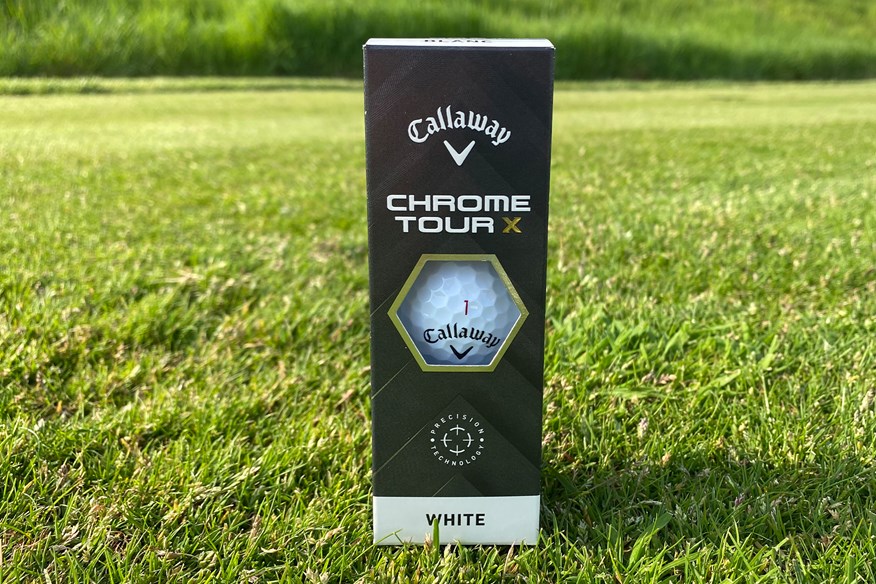

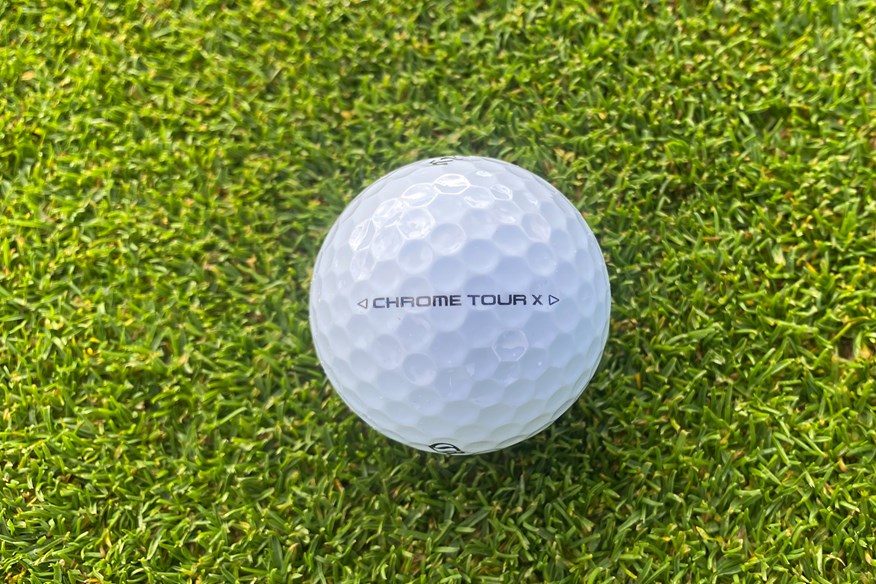
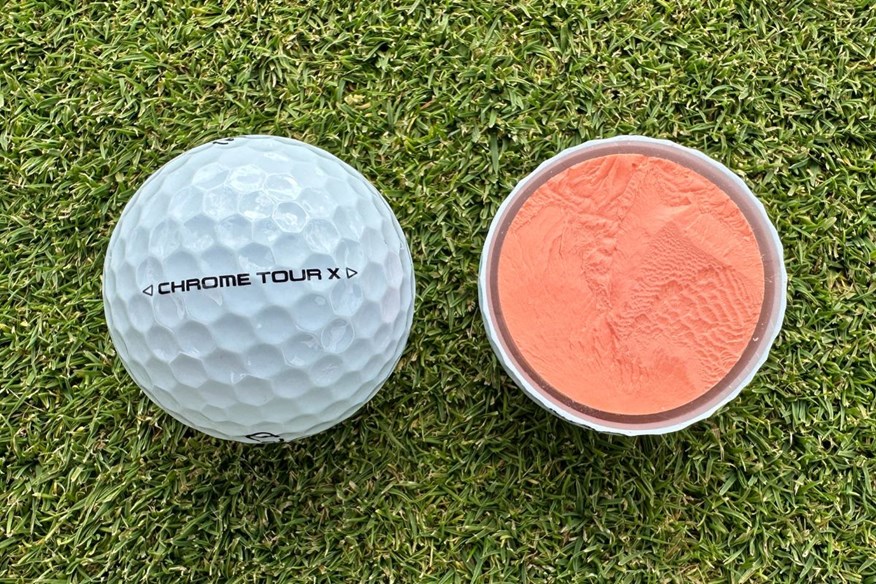
Every golfer wants a golf ball that stops on a dime when playing around the greens because it makes getting up and down so much easier. The golf ball that's going to help you out most around the greens is the Callaway Chrome Tour X.
Of all 62 golf balls tested, the Chrome Tour X is the highest-spinning golf ball around the green. This golf ball was able to generate 6,343rpm, the nearest in this category is the TaylorMade TP5 (6,100), and the second-highest spinning in the test is the Srixon Z-Star Diamond (6,137).
The high-spin nature of the Chrome Tour X does continue through the bag, which isn't an issue when approaching greens. As well as being awarded the gold medal for short game performance, the Chrome Tour X also finished first for approach play.
With the 7-iron shot, this is the highest-spinning golf ball in the test with 5,242rpm. Over 400 revs higher than the second-highest-spinning golf ball in this category (TaylorMade TP5 - 4,823).
The only issue with such a high-spinning golf ball is it hinders distance, so if you prioritise distance over spin, the Chrome Tour is a better option. However, if you want more control and spin, the Chrome Tour X has to be at the top of your list.
Off the tee, you aren't losing much distance with the Chrome Tour X, and at 93mph, this is the second-best four-piece and five-piece golf ball from tee to green.
On-course verdict
Callaway have absolutely smashed it out of the park this year with their four-piece Chrome Tour, Chrome Tour X, and Chrome Tour Triple Diamond golf balls.
Other than having major shelf appeal, the Chrome Tour X is premium for multiple reasons. One of which is that it's widely used by Tour players, and another is that it's a really solid performer from tee to green.
Off the tee, the Chrome Tour X is the highest-spinning Chrome Tour model, which won’t be to everyone’s liking, but for those who struggle to generate height and potentially lose the ball left, then the Chrome Tour X is well worth considering.
The Chrome Tour X spins on command. Playing into and around greens is extremely fun and simple because you can throw this ball at the pin and it will stop.
If you want a golf ball that spins high and is easy to control, there isn't a better option out there.
Read our full Callaway Chrome Tour X golf ball review.
Pros
- Extremely high spin and control when approaching the greens
- Produces brilliant ball speeds and distance
- Played by some of the best players in the world across numerous Tours
Cons
- Callaway's highest-spinning premium golf ball might not be what every golfer needs
| Carry distance (yds) | Driver 114mph - 269.7 | Driver 93mph - 208.9 | Driver 78mph - 160.8 | 7-iron - 156.1 |
| Ball speed (mph) | Driver 114mph - 163.6 | Driver 93mph - 134.3 | Driver 78mph - 113 | 7-iron - 108.7 |
| Backspin (rpm) | Driver 114mph - 2,997 | Driver 93mph - 3,048 | Driver 78mph - 2,921 | 7-iron - 5,242 | Pitch - 6,343 |
| Launch angle (°) | Driver 114mph - 10.8 | Driver 93mph - 12.5 | Driver 78mph - 13.5 | 7-iron - 20.3 | Pitch - 29.5 |
| Descent angle (°) | Driver 114mph - 38.7 | Driver 93mph - 34 | Driver 78mph - 28.8 | 7-iron - 45.3 | Pitch - 34.4 |
| Peak height (yds) | Driver 114mph - 33.3 | Driver 93mph - 23.4 | Driver 78mph - 16 | 7-iron - 29.1 | Pitch - 6.3 |
| Compression (psi) | 111 |
- Hyper fast soft core
- Seamless Tour aero
- High-performance Tour urethane soft cover
- 332 dimples
- 4-Piece construction
- Available in white and yellow
- Alternative models include Triple Track, 360° Triple Track, TruTrack, and Limited Edition patterns
Bronze medal for tee to green performance at 78mph
The Seed SD-02 is the best-performing DTC golf ball off the tee. The SD-02 is designed to compete with the likes of the Titleist Pro V1x and TaylorMade TP5x, and that's exactly where it pitches based on the results from our test.
You can even argue it's a better-performing golf ball. At 78mph, the SD-02 is the third-best golf ball from tee to green, and at 93mph and 114mph, it misses out by one, finishing just behind the Pro V1x at 114mph and with the same score as the Staff Model at 93mph.
The SD-02 is such a solid golf ball from tee to green. At all three driver speeds, and with the approach shot, there isn't one area where it doesn't perform well.
Seed says this is a low-launching and low-flying golf ball, but if anything, it is above the average for launch angle and peak height in this category of golf balls.
This is supposedly Seed's highest-spinning golf ball around the green, but it's not as high-spinning as the SD-01. The SD-02 is also not as high-spinning in approach play as other Seed golf balls, and it's the lowest-spinning golf ball within this category (4,397rpm).
However, thanks to the steep descent angle, you can expect the SD-02 to hit and hold greens and come to a quick stop in the short game.
The Seed SD-02 is a solid golf ball from tee to green at varying swing speeds. It's not as high-spinning as other golf balls in this category or other Seed golf balls, but considering this is said to challenge the Pro V1x and TP5x, it does do that, at a cheaper price.
On-course verdict
I genuinely believe that any golfer could play with this golf ball and make it work for them. The SD-02 does it all. It’s long off the tee, it spins on approach shots, and it rolls perfectly on the putting surface.
The ball flight is consistent above all else, so I feel like I can trust that this golf ball will behave off the tee and help me find the fairway. The other plus off the tee is that it’s long, which no golfer can complain about.
The SD-02 feels slightly softer than other X-model golf balls, which will please most golfers because typically X-models tend to be firmer-feeling. I’m a fan of a firmer golf ball, and the SD-02 still feels really good to me.
Throughout the bag, the response you get from the SD-02 is very strong. If you hit the ball well, you’ll know, and if you hit the ball badly (sadly), you’ll know.
Read our full Seed SD-02 golf ball review.
Pros
- Amazing versatile golf ball that works for a wide range of golfers
- Good distance off the tee
- Incredible value for money
Cons
- A lower ball flight compared to other X-model golf balls
| Carry distance (yds) | Driver 114mph - 272.8 | Driver 93mph - 209.7 | Driver 78mph - 162.4 | 7-iron - 158.7 |
| Ball speed (mph) | Driver 114mph - 163.8 | Driver 93mph - 134.2 | Driver 78mph - 113.4 | 7-iron - 109.5 |
| Backspin (rpm) | Driver 114mph - 2,688 | Driver 93mph - 2,718 | Driver 78mph - 2,484 | 7-iron - 4,397 | Pitch - 5,845 |
| Launch angle (°) | Driver 114mph - 11 | Driver 93mph - 12.8 | Driver 78mph - 14 | 7-iron - 21.3 | Pitch - 30.9 |
| Descent angle (°) | Driver 114mph - 37 | Driver 93mph - 32.5 | Driver 78mph - 27.8 | 7-iron - 45 | Pitch - 36.4 |
| Peak height (yds) | Driver 114mph - 32.1 | Driver 93mph - 22.7 | Driver 78mph - 15.9 | 7-iron - 30 | Pitch - 7 |
| Compression (psi) | 104 |
- High energy rubber core
- Ultra thin DuPont Surlyn mantle
- DuPont HPF inner cover
- Soft cast urethane cover
- 336 dimples
- 4-Piece construction
- Available in white only
Gold medal for driver performance
Longest golf ball
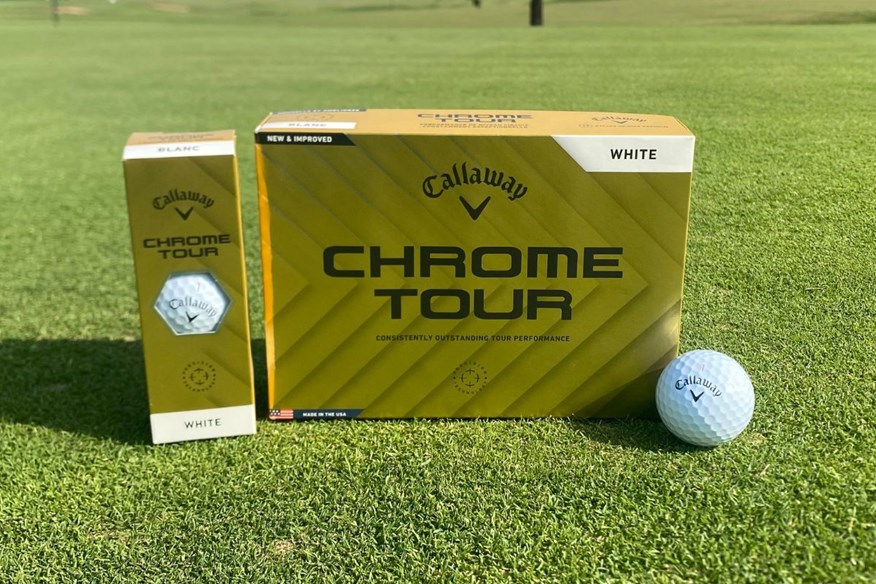

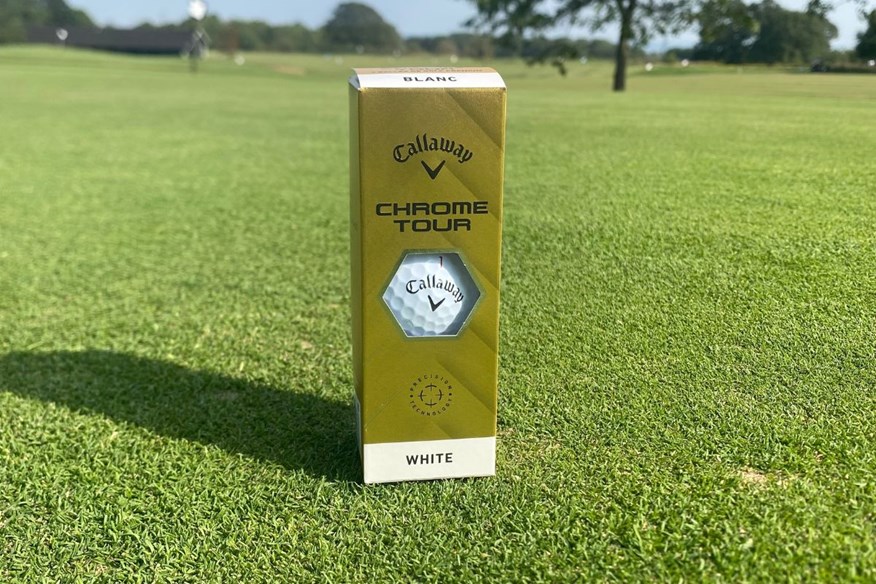
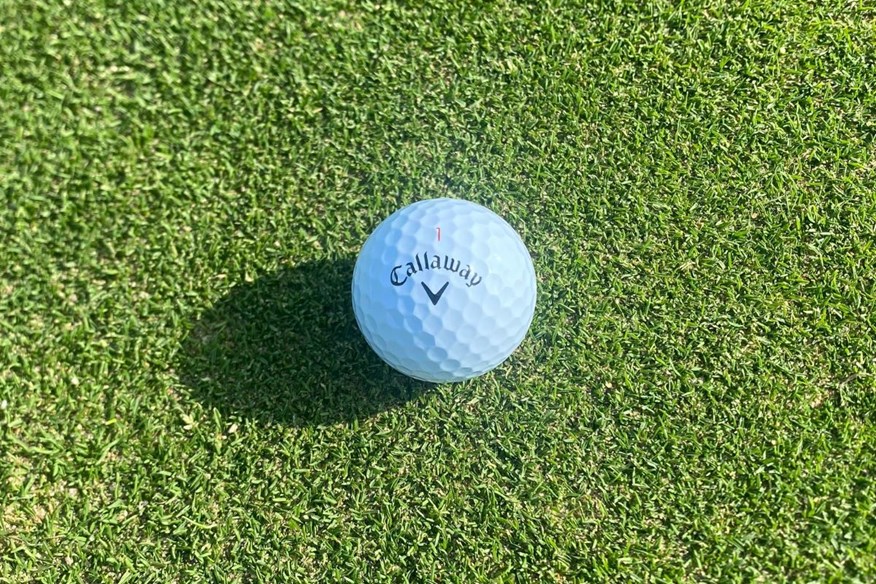

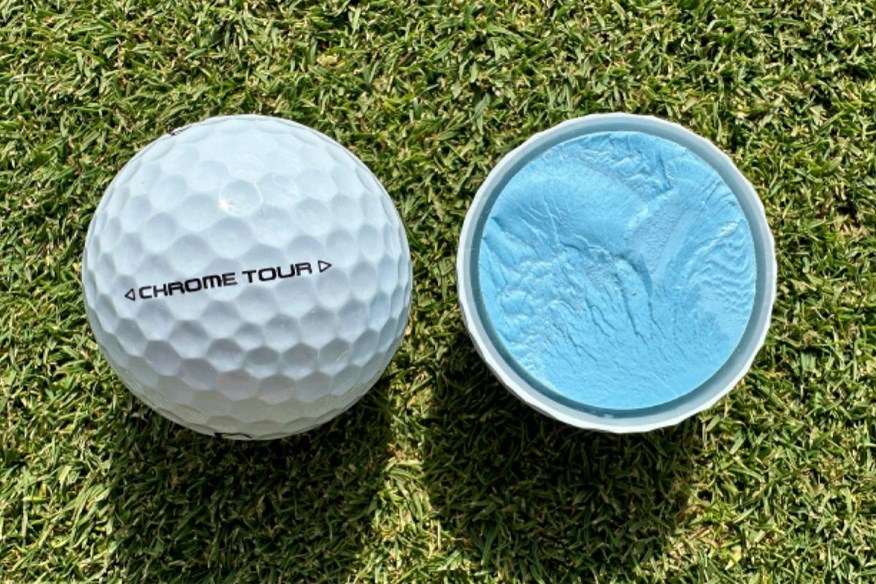
If you're looking to improve your tee game, the Callaway Chrome Tour is the ball you should choose out of all four-piece and five-piece golf balls.
At 114mph, the Callaway Chrome Tour is the fastest and longest golf ball of the entire test, being the only golf ball out of all 62 to exceed 275 carry yards. It's a similar story at 93mph, being the longest golf ball off the tee of all 62 tested.
Chrome Tour isn't as competitive with carry distance at slower swing speeds, but being lower spinning than other golf balls in this category helps to produce competitive total distance. Also, ball speed is joint-third fastest.
Where the Chrome Tour is low spinning off the tee, it's not the case approaching or playing around greens.
Chrome Tour is the complete package, and definitely a golf ball you have to consider if you want a premium, Tour-level golf ball that's fast and long off the tee, with good iron game and short game spin and control.
On-course verdict
I've had a lot of enjoyment playing with the Chrome Tour, most notably when I took this model out for a spin on The Old Course at St. Andrews. It's extremely difficult to find a negative considering it's long off the tee, high-spinning around the greens, and feels amazing.
This isn't a soft-feeling golf ball, but it's not firm either, it's somewhere in the middle, which is very pleasant because it offers great feedback as well as amazing feel.
The Chrome Tour is very strong off the tee, and it is noticeably longer than the Chrome Tour X on the course because it's not as high-spinning. The Chrome Tour is extremely popular on Tour, and it's clear to see why.
The Chrome Tour and Tour X are very closely matched, but the Chrome Tour is probably more versatile; it's just not as high-spinning when approaching and playing around greens.
Read our full Callaway Chrome Tour golf ball review.
Pros
- Impressive distance and ball speed
- Played by some of the best golfers in the game
- Very consistent golf balls
Cons
- Not as high-spinning as the Chrome Tour X
| Carry distance (yds) | Driver 114mph - 275.4 | Driver 93mph - 210.8 | Driver 78mph - 161.8 | 7-iron - 155.6 |
| Ball speed (mph) | Driver 114mph - 165.1 | Driver 93mph - 134.7 | Driver 78mph - 113.4 | 7-iron - 108.7 |
| Backspin (rpm) | Driver 114mph - 2,689 | Driver 93mph - 2,701 | Driver 78mph - 2,508 | 7-iron - 4,658 | Pitch - 6,036 |
| Launch angle (°) | Driver 114mph - 11 | Driver 93mph - 12.7 | Driver 78mph - 13.9 | 7-iron - 20.9 | Pitch - 30.1 |
| Descent angle (°) | Driver 114mph - 37.3 | Driver 93mph - 32.5 | Driver 78mph - 27.6 | 7-iron - 44.9 | Pitch - 35.2 |
| Peak height (yds) | Driver 114mph - 32.6 | Driver 93mph - 22.7 | Driver 78mph - 15.7 | 7-iron - 29.4 | Pitch - 6.5 |
| Compression (psi) | 113 |
- Hyper fast soft core
- Seamless Tour aero
- High-performance Tour urethane soft cover
- 332 dimples
- 4-Piece construction
- Available in white and yellow
- Alternative models include Triple Track, 360° Triple Track, TruTrack, and Limited Edition patterns
Vice's fastest and longest golf ball
The Vice Pro Plus is one of four golf balls in this category that didn't receive an award, but don't let that put you off. That's largely due to its tee performance. While this is the fastest and longest Vice golf ball, it's not overly competitive against other four-piece and five-piece golf balls.
At 114mph, Pro Plus is the third-lowest performing golf ball, the lowest performing at 93mph, and the third-lowest performing at 78mph. However, for approach play and short game performance, the Pro Plus does improve.
The backspin generated by the Pro Plus with the 7-iron shot is the third-highest within this category (4,807rpm), and the descent angle is 45.1°. The Pro Plus finished just outside the podium places for approach play performance.
It's the same story for short game performance. With 6,090rpm, Pro Plus finished fourth for short game performance by one revolution.
With the Vice Pro Plus, you might not have the most competitive golf ball off the tee, but from the fairway and around the greens, you can expect a golf ball that'll spin easily and is easy to control.
On-course verdict
This is the only golf ball in Vice's Pro range I recommend. That might sound harsh, considering the Pro is one of the best three-piece Tour-level golf balls, but in my on-course experience, I've not seen enough from the Pro that would make me recommend it over the Pro Plus.
This golf ball loses absolutely zero marks for distance, and as a whole, off the tee, I really couldn’t criticise the Pro Plus (except for one thing, which I’ll come to later). My main gripe is its performance around the greens; I just don’t feel as though it spins enough compared to other X-model golf balls.
It could be down to my chipping action, but I definitely find my joy around the greens with other golf balls when it comes to spin and control. Approaching greens, I feel very much the same as I do with regards to this golf ball’s performance off the tee.
Throughout the bag, I get very little feedback from any strike, whether it be good or bad. I distinctly remember hitting a really good tee shot on the 8th hole on the Ailsa Course at Turnberry and saying that it felt “dead”. When you really nail a drive, you want to be saying “that felt amazing,” but it left me feeling underwhelmed.
On the putting green, I feel as though there are more responsive golf balls than the Pro Plus, but you can’t argue with the roll, because it’s solid.
Ultimately, my overarching opinion on the feel and response of the Pro Plus is – as I’ve already mentioned – underwhelming.
Read our full Vice Pro Plus golf ball review.
Pros
- Solid performance from tee to green
- Brilliant value for a premium product
- A versatile model that works for ranging swing speeds
Cons
- A slightly muted feeling and limited feedback
| Carry distance (yds) | Driver 114mph - 271.9 | Driver 93mph - 208.2 | Driver 78mph - 160.5 | 7-iron - 155.2 |
| Ball speed (mph) | Driver 114mph - 163.6 | Driver 93mph - 133.7 | Driver 78mph - 114.3 | 7-iron - 112.9 |
| Backspin (rpm) | Driver 114mph - 2,780 | Driver 93mph - 2,848 | Driver 78mph - 2,643 | 7-iron - 4,807 | Pitch - 6,090 |
| Launch angle (°) | Driver 114mph - 10.9 | Driver 93mph - 12.7 | Driver 78mph - 13.7 | 7-iron - 20.8 | Pitch - 30.3 |
| Descent angle (°) | Driver 114mph - 37.4 | Driver 93mph - 33 | Driver 78mph - 27.8 | 7-iron - 45.1 | Pitch - 35.4 |
| Peak height (yds) | Driver 114mph - 32.2 | Driver 93mph - 22.8 | Driver 78mph - 15.6 | 7-iron - 29.4 | Pitch - 6.6 |
| Compression (psi) | 116 |
- Ultra thin cast urethane cover
- Versatile magnesium ionomer outer mantle
- Surlyn grade inner mantle
- Lightweight speed core
- 336 dimples
- 4-Piece construction
- Available in white and lime
- Alternative models include Drip, Shade, and Tracer
Bronze medal for off-the-tee performance
Best five-piece golf ball
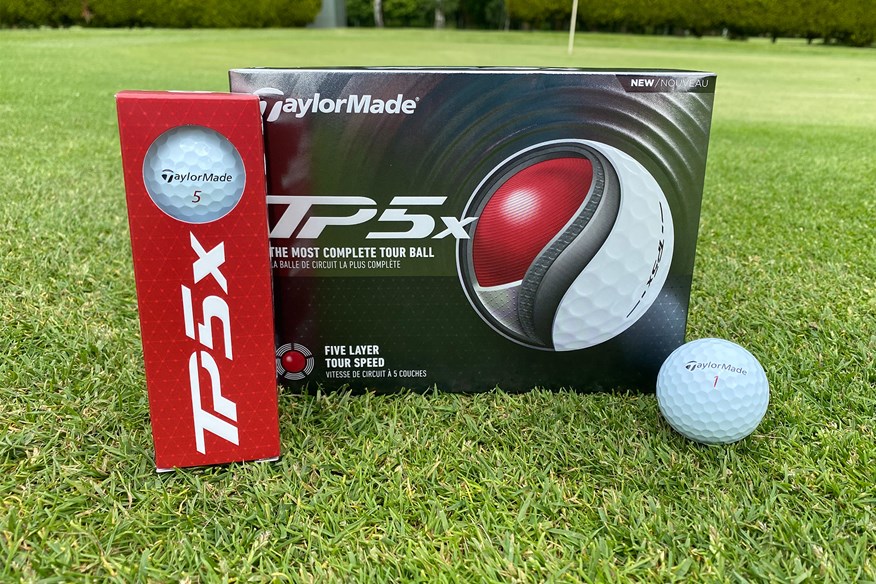

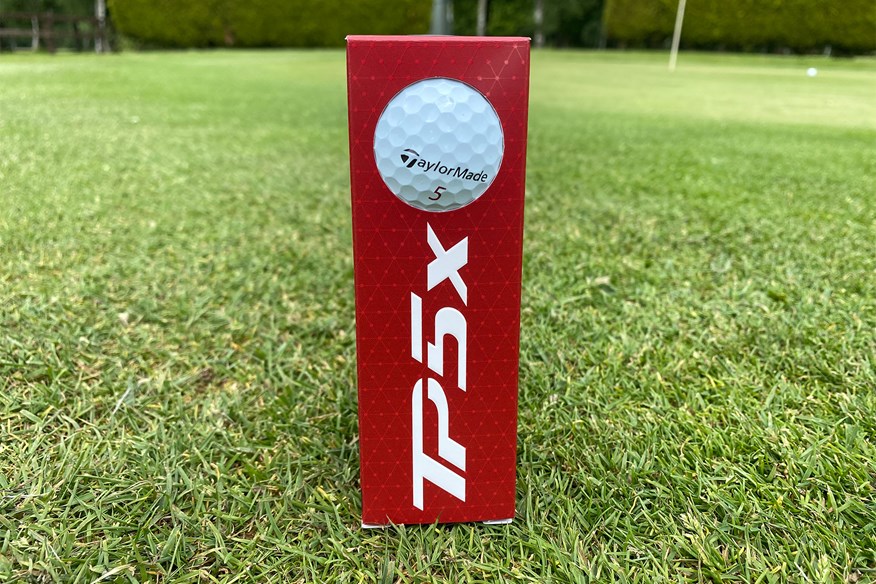
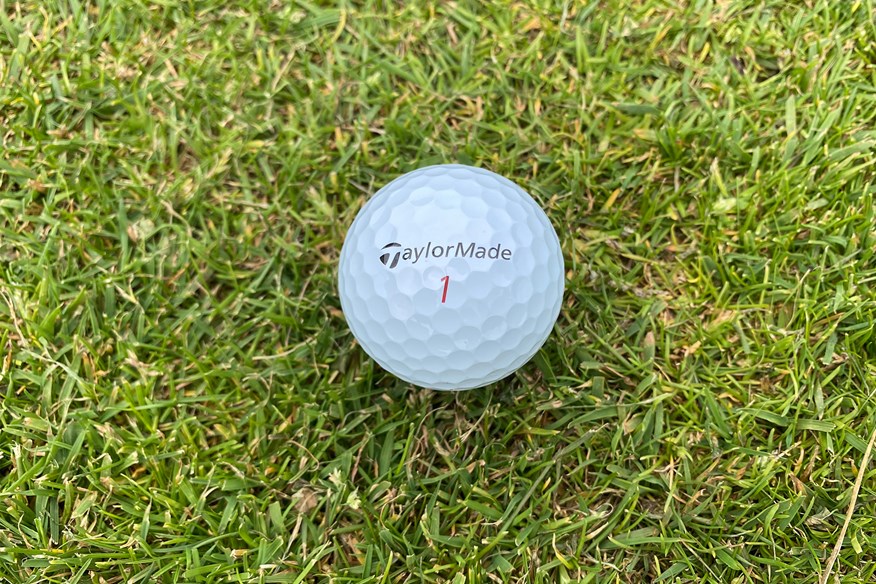
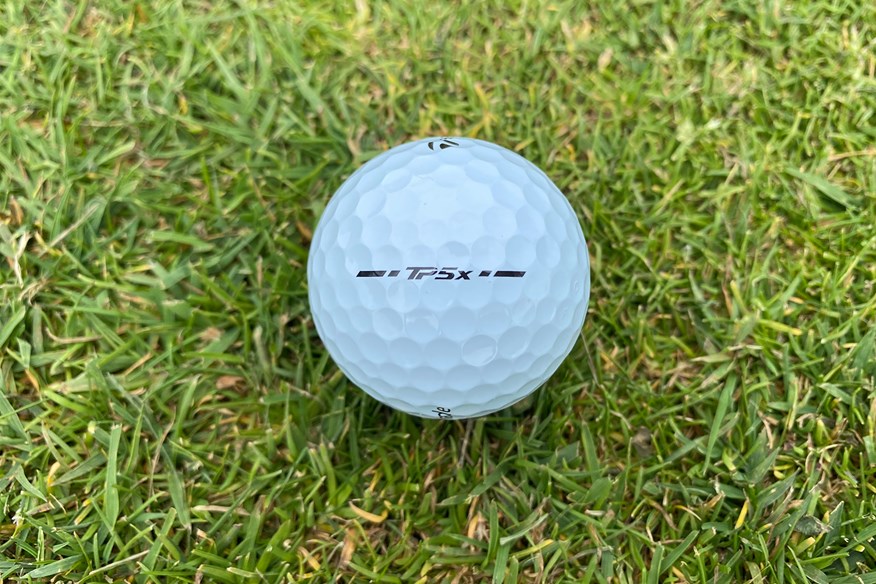
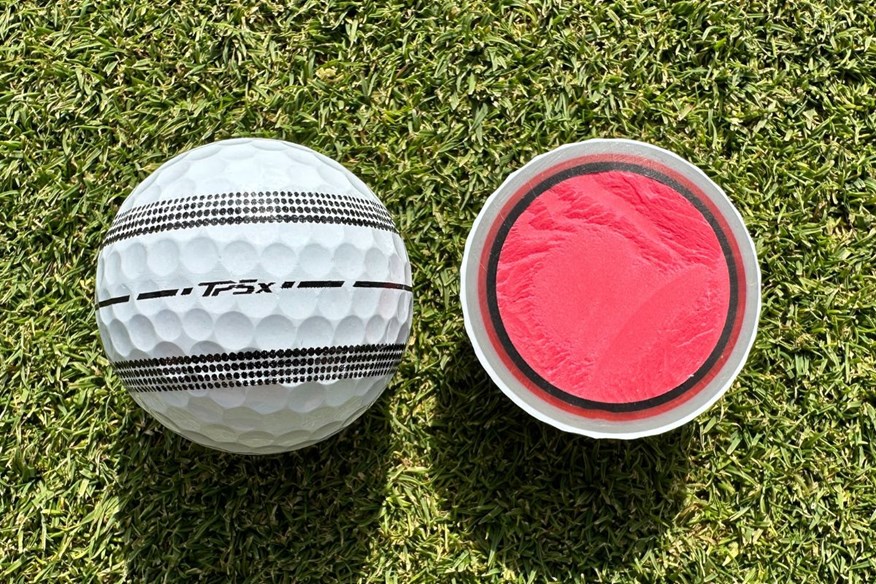
The TaylorMade TP5x steps up into a league of its own off the tee at the 78mph driver swing speed. It's a yard longer than the second-best performing golf ball and 0.4mph faster. At 93mph, TP5x is strong once again, being the fastest golf ball and the second longest.
Off-the-tee performance of the TP5x at both swing speeds is impressive, and it helps it achieve the bronze medal for off-the-tee performance. At 114mph, there is a drop-off in performance, but not enough to hinder the TP5x's overall score.
Approaching and playing around greens, the TP5x isn't as high-spinning as the TP5, but this model is sold as a low-spinning golf ball. With that in mind, it delivers a good amount of spin with the 7-iron (4,609rpm) and 40-yard pitch shots (6,042rpm).
TP5x delivers fast ball speeds, which makes it a very efficient golf ball. If you prioritise distance, the TP5x has to be in your thoughts, but not if you have a quick swing speed. If you're looking for more spin and control, I'd suggest looking at the TP5 instead.
On-course verdict
I'm very split between whether I prefer the firmer and more distance-oriented TP5x or the softer and higher-spinning TP5. If I'm being honest, my game benefits much more from a higher-spinning golf ball, so I think I have to side with Rory on this one and go for the TP5.
The reason I'm split is because I much prefer the firmer feel and response of the TP5x. I'm not particularly interested in the extra distance the TP5x offers because I'd much rather give up a couple of yards off the tee in exchange for putting the ball a couple of yards closer from the fairway.
The TP5x is well represented on Tour, despite a couple of players - including Rory - moving over to the TP5. It's clear to see why this five-piece golf ball is popular on Tour and in the amateur ranks, because it is solid from tee to green with an emphasis on eeking out a couple more yards.
I'm slightly in favour of the TP5, but if you ask me again in a couple of months, but opinion could well have changed.
Read our full TaylorMade TP5x golf ball review.
Pros
- High feedback and response
- Quality performance from tee to green
- Widely played on Tour
Cons
- Not as much short-game spin as the TP5
| Carry distance (yds) | Driver 114mph - 272.5 | Driver 93mph - 210.3 | Driver 78mph - 163.6 | 7-iron - 157.2 |
| Ball speed (mph) | Driver 114mph - 163.7 | Driver 93mph - 134.9 | Driver 78mph - 114.3 | 7-iron - 109.4 |
| Backspin (rpm) | Driver 114mph - 2,700 | Driver 93mph - 2,777 | Driver 78mph - 2,548 | 7-iron - 4,609 | Pitch - 6,042 |
| Launch angle (°) | Driver 114mph - 11 | Driver 93mph - 12.5 | Driver 78mph - 13.7 | 7-iron - 21.1 | Pitch - 29.9 |
| Descent angle (°) | Driver 114mph - 37.1 | Driver 93mph - 32.5 | Driver 78mph - 27.7 | 7-iron - 45.2 | Pitch - 35.1 |
| Peak height (yds) | Driver 114mph - 32.1 | Driver 93mph - 22.6 | Driver 78mph - 15.8 | 7-iron - 29.9 | Pitch - 6.6 |
| Compression (psi) | 117 |
- Speed-wrapped core
- Progressive 5-layer construction
- Seamless Tour flight dimple pattern
- 322 dimples
- 5-Piece construction
- Available in white only
- Alternative models include Pix, Stripe, and Limited Edition patterns
Best four-piece and five-piece golf balls: Robot test data
View the full four-piece and five-piece golf balls results.
| Golf ball | Wilson Staff Model X | Wilson Staff Model | Callaway Chrome Tour X | Seed SD-02 | Callaway Chrome Tour | Vice Pro Plus | TaylorMade TP5x |
| Compression | 114 | 112 | 111 | 104 | 113 | 116 | 117 |
| 114mph Driver Ball Speed (mph) | 164.3 | 164.7 | 163.6 | 163.8 | 165.1 | 163.8 | 163.7 |
| 114mph Driver Launch Angle (°) | 11.2 | 11.2 | 10.8 | 11.0 | 11.0 | 10.9 | 11.0 |
| 114mph Driver Backspin (rpm) | 2797 | 2829 | 2997 | 2688 | 2689 | 2780 | 2700 |
| 114mph Driver Carry Distance (yds) | 273.7 | 274.3 | 269.7 | 272.8 | 275.4 | 271.9 | 272.5 |
| 114mph Driver Height (yds) | 33.7 | 34.1 | 33.3 | 32.1 | 32.6 | 32.2 | 32.1 |
| 114mph Driver Descent Angle (°) | 38.4 | 38.6 | 38.7 | 37.0 | 37.3 | 37.4 | 37.1 |
| 93mph Driver Ball Speed (mph) | 134.6 | 134.0 | 134.3 | 134.2 | 134.7 | 133.7 | 134.9 |
| 93mph Driver Launch Angle (°) | 12.5 | 12.8 | 12.5 | 12.8 | 12.7 | 12.7 | 12.5 |
| 93mph Driver Backspin (rpm) | 2792 | 2703 | 3048 | 2718 | 2701 | 2848 | 2777 |
| 93mph Driver Carry Distance (yds) | 209.8 | 209.2 | 208.9 | 209.7 | 210.8 | 208.2 | 210.3 |
| 93mph Driver Height (yds) | 22.6 | 22.5 | 23.4 | 22.7 | 22.7 | 22.8 | 22.6 |
| 93mph Driver Descent Angle (°) | 32.6 | 32.4 | 34.0 | 32.5 | 32.5 | 33.0 | 32.5 |
| 78mph Driver Ball Speed (mph) | 113.4 | 113.3 | 113.0 | 113.4 | 113.4 | 112.9 | 114.3 |
| 78mph Driver Launch Angle (°) | 13.8 | 13.9 | 13.5 | 14.0 | 13.9 | 13.7 | 13.7 |
| 78mph Driver Backspin (rpm) | 2623 | 2595 | 2921 | 2484 | 2508 | 2643 | 2548 |
| 78mph Driver Carry Distance (yds) | 162.2 | 161.7 | 160.8 | 162.4 | 161.8 | 160.5 | 163.6 |
| 78mph Driver Height (yds) | 15.9 | 15.8 | 16.0 | 15.9 | 15.7 | 15.6 | 15.8 |
| 78mph Driver Descent Angle (°) | 28.1 | 28.0 | 28.8 | 27.8 | 27.6 | 27.8 | 27.7 |
| 7-Iron Ball Speed (mph) | 109.3 | 109.0 | 108.7 | 109.5 | 108.7 | 108.9 | 109.4 |
| 7-Iron Launch Angle (°) | 21.0 | 21.1 | 20.3 | 21.3 | 20.9 | 20.8 | 21.1 |
| 7-Iron Backspin (rpm) | 4782 | 4653 | 5242 | 4397 | 4658 | 4807 | 4609 |
| 7-Iron Carry Distance (yds) | 156.1 | 156.3 | 152.5 | 158.7 | 155.6 | 155.2 | 157.2 |
| 7-Iron Height (yds) | 30.0 | 29.8 | 29.1 | 30.0 | 29.4 | 29.4 | 29.9 |
| 7-Iron Descent Angle (°) | 45.4 | 45.2 | 45.3 | 45.0 | 44.9 | 45.1 | 45.2 |
| 40-Yard Pitch Ball Speed (mph) | 46.3 | 46.4 | 46.2 | 46.6 | 45.9 | 46.1 | 46.3 |
| 40-Yard Pitch Launch Angle (°) | 30.4 | 30.6 | 29.5 | 30.9 | 30.1 | 30.3 | 29.9 |
| 40-Yard Pitch Backspin (rpm) | 6091 | 5993 | 6343 | 5845 | 6036 | 6090 | 6042 |
| 40-Yard Pitch Carry Distance (yds) | 39.6 | 39.8 | 38.8 | 40.3 | 38.8 | 39.2 | 39.3 |
| 40-Yard Pitch Height (yds) | 6.7 | 6.8 | 6.3 | 7.0 | 6.5 | 6.6 | 6.6 |
| 40-Yard Pitch Descent Angle (°) | 35.5 | 35.8 | 34.4 | 36.4 | 35.2 | 35.4 | 35.1 |
Best four-piece and five-piece golf balls 2025: Buying Guide
The four-piece and five-piece category of golf balls is extremely competitive – as you can see from the number of models in our 2025 robot test. While I believe the majority of golfers would benefit from playing with one of these golf balls, determining which model isn’t always easy.
Not all four-piece and five-piece golf balls perform the same. Many of them have crossovers in their performance, but they’re not all carbon copies of one another. With most, if not all, golf balls in this category, they will deliver strong distance off the tee and high levels of spin and control when playing into and around greens, but it’s in other areas where they differ.
Depending on your needs and requirements from a golf ball, reading through our detailed buying guide will hopefully provide you with some clarity as to which model will work best for you.
Ability
Regardless of your ability, you will benefit from playing with one of the best four-piece and five-piece golf balls because of the technology packed within. However, that’s not to say if you’re brand new to the game you should be spending around £40 (or more) on a dozen golf balls – but you can if you want to.
Better and more seasoned golfers arguably should be playing with the best balls they can afford because it will 100 per cent improve your game from tee to green.
Budget
It’s not easy to budget if you’re looking to play with a four- or five-piece golf ball, but it is still possible. Tour-proven models cost up to – and sometimes beyond – £50, but you can spend up to half that price by buying DTC golf balls in bulk.
The most important consideration is whether the golf ball will improve your game. If it’s the case that a £25 DTC golf ball enables you to play your best golf, then absolutely put that ball in play. However, if it’s hindering your performance, you’re much better off increasing your budget and finding a ball in this category that works.
Players who are new to the game or don’t get out often are more likely to budget when it comes to purchasing golf balls. Whereas more frequent and skilled golfers are less likely to budget and opt for more expensive golf balls. That’s not to say every golfer meeting one of those credentials behaves this way.
While I’ve probably been alive less number of years than some of you have played golf, I’ve had the pleasure of working in the golf industry for the entirety of my working life. During that time, I’ve seen golfers of all abilities splashing the cash on the latest golf clubs in the hope of improving their game and being thrifty when it comes to spending on golf balls – I’ve been a culprit of this myself in my early golfing days!
The next time you look at a four- or five-piece golf ball on the shelf and consider putting it back for a cheaper alternative, ask yourself if it’s going to perform in a way that’s going to allow you to play better golf or get the same enjoyment from the game. If the answer’s no, stick to your initial choice and think about where else you could budget with other equipment and accessories.
Feel
The vast majority of golfers look for soft-feeling golf balls, but they’re not as common in this category as they are in others. That being said, even golf balls labelled as being firm, such as the Wilson Staff Model X, is still soft compared to the rocks that used to exist. Many golfers enjoy soft-feeling golf balls because they deliver a sweet sensation off of every club in the bag – except if you skull one.
I enjoy playing with firmer golf balls like the Wilson Staff Model X and Titleist Pro V1x because I feel as though they provide more feedback and a stronger response. However, feel is completely personal, and like I say, it’s tough to find a super-firm golf ball because most are made to be soft to please the needs of more golfers.
Performance
Golf balls in this category are extremely high-performing because manufacturers have more ability to fine-tune the overall performance of the golf ball, thanks to the additional layers. A golf ball’s intended performance tends to be outlined on the box. It relates to the technology and how that technology has been constructed and distributed.
With all of the best four-piece and five-piece golf balls, you can expect competitive distance, spin, and control throughout your golf bag. It’s very rare for a golf ball in this category to underdeliver in any area. While one model might not be as high-spinning as another around the greens, it will still provide ample spin, and more than models of lesser layers.
The results from our mammoth robot test show this, with even the specifically designed low-spin four- and five-piece golf balls producing strong spin figures around the greens, and non-distance-oriented models delivering long distance off the tee.
Spin
I personally believe it’s this property of four- and five-piece golf balls that sets them apart from other categories. Every single golf ball sporting four or five layers is capable of delivering optimum spin for its intended player.
I’ve seen firsthand how playing with the right four- or five-piece golf ball can positively impact spin throughout your bag. During a ball fitting at Titleist, I discovered that a Titleist Pro V1x and Titleist Velocity performed very similarly with my driver, but with a 7-iron, the spin dropped slightly with the Velocity, and then with a 60° wedge, the spin fell massively with the Velocity.
Spin in the golf ball comes from the combination of layers within the golf ball reacting with one another, hence why golf balls in this category spin more in approach play because they consist of more layers and the technology is more refined. Cheaper golf balls tend to consist of two layers: the cover and core. Therefore, they don’t have the number of layers required to produce astronomical spin when attacking pins.
Another factor that helps to enhance spin is the cover material. Every golf ball in this category sports a urethane cover, which helps to generate more spin because it’s a more flexible material compared to ionomer or surlyn, which doesn’t create as much friction with the clubface as urethane does.
Spin is massively important because it can either make you hit and hold a green or hit and fly over the green. The best golf balls for spin are by far premium golf balls, because they consist of the best golf balls from this category. If you feel as though you need high levels of spin when attacking greens, have a look at the best high-spin golf balls. Alternatively, if you feel as though spin is hurting your game, check out the best low-spin golf balls.
Distance
I would honestly say that distance is the last factor to consider when purchasing golf balls. The best way to figure out which golf balls are best for you is by working your way back from the green to the tee box. The best way of doing this is with a launch monitor to see your numbers, but if you don’t have access to one, you can do it with your eye very easily.
Start by hitting wedge shots into the green and see which balls are performing best with spin, then work your way back to 7-iron distance and look for the same numbers with slightly more of an eye on carry distance. You should have whittled it down to one or two golf balls, hit them off the tee, and look at which performs the best.
If you’re testing four- or five-piece golf balls up against cheaper golf balls, I guarantee a premium golf ball will always come out on top. You will find one that performs well for you, or you might have the luxury of deciding between a handful.
By testing golf balls this way, you’ll end up with the ball that performs best in the short game, which is where you score. Distance is important, but there are other ways of improving distance without sacrificing spin in a golf ball.
Colour
The most common golf ball colour is white; however, there are plenty of other colours and designs to choose from. More vibrant colours, such as yellow, orange, or green, are all easy to pick up, and they help some people with visibility – hence why they make for the best winter golf balls.
Other ways of adding colour to the golf ball can be by design, whether it be a splash of colour seen on Vice golf balls or an alignment design which also helps with visibility, such as TaylorMade’s Pix golf balls or Callaway’s Triple Track golf balls.
If you’ve only ever played with white golf balls, it might be worth trying a more colourful golf ball, especially if you’re always the one asking your playing partners, “Where did that one go?”.
Alignment
More and more golf balls are being released with enhanced alignment, and even standard golf balls have a more prominent alignment stamp now than they’ve ever had. The majority of brands now offer golf balls with enhanced alignment aids. The enhanced alignment aids can be extremely useful for putting and even lining up shots on the tee. Another plus of alignment golf balls is the alignment serves as a tool for finding your golf ball either in the air or among the trees.
Best four-piece and five-piece golf balls: FAQs
What to read next
For performance insights tailored to your swing speed and preferences, head to our results hubs:
- Best 3-piece golf balls
- Best 2-piece golf balls
- Best golf balls for fast swing speeds
- Best golf balls for average swing speeds
- Best golf balls for slow swing speeds
- Best golf balls for distance
- Best golf balls for approach play
- Best golf balls for short game
- Best golf ball for mid-handicaps
- Best golf balls for beginners
- Most consistent golf balls
